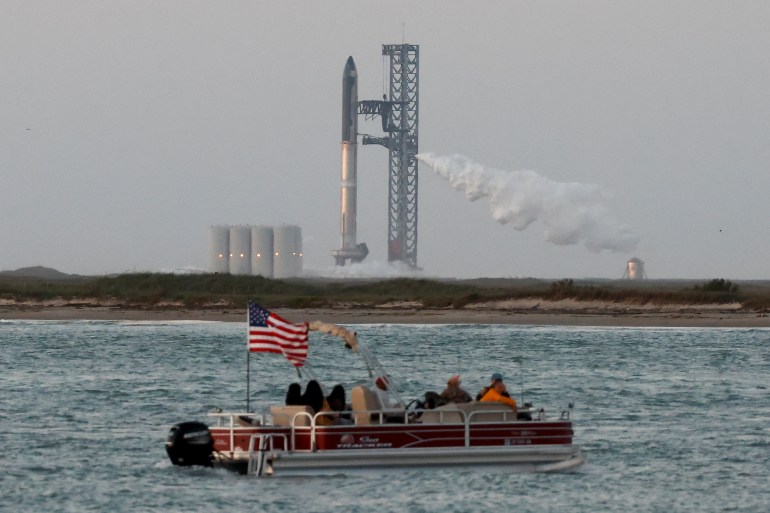The Starship is the most powerful rocket ever built and is designed to send astronauts to the Moon, Mars or beyond.
SpaceX’s massive Starship has launched, but failed to make orbit.
The stainless steel space vessel – composed of a space craft sitting atop the so-called Super Heavy booster rocket – took off the launch site in launch site at Boca Chica, Texas on Thursday morning.
At least five of its 33 Raptor engines did not appear to fire upon liftoff, said Stephen Clark, with Spaceflightnow.com. The rocket cleared the launch tower and headed into the sky.
However, the space craft failed to separate from the Super Heavy booster, with the entire vessel spinning before falling apart – in what is technically called a “rapid unscheduled disassembly”.
The behemoth launching system was 120 metres (394 feet) tall, higher than New York City’s Statue of Liberty. It’s successful takeoff represents a step forward in US space travel, with the company foreseeing the vessel as a key link in a manned mission one day reaching Mars.
The liftoff sets a record for the largest rocket ever to be launched.
SpaceX’s owner, Elon Musk had said in March that the chances the rocket would reach orbit were about 50 percent.
There was a fire at the launch site following the liftoff.
As designed, the Starship rocket is nearly two times more powerful than NASA’s own Space Launch System (SLS), which made its debut uncrewed flight to orbit in November.
The US space agency NASA has also picked the Starship spacecraft to ferry astronauts to the Moon in late 2025 – a mission known as Artemis III – for the first time since the Apollo program ended in 1972.
SpaceX had previously scrubbed a launch planned for Monday, citing a pressurization issue in the lower-stage Super Heavy booster. Musk tweeted he “learned a lot” from the abandoned test.

Prototypes of the Starship cruise vessel had made five subspace flights up to 10 km (6 miles) above Earth in recent years. The Super Heavy booster had never left the ground, although SpaceX did conduct a test-firing of the booster, igniting 31 of its 33 Raptor engines for roughly 10 seconds with the rocket bolted in place vertically atop a platform in February.
“It’s a very risky flight,” Musk said in a Twitter live on Sunday. “It’s the first launch of a very complicated, gigantic rocket”.
In a successful test, all 33 Raptor engines would ignite simultaneously to loft the Starship on a flight that nearly completes a full orbit of the Earth before it re-enters the atmosphere and free-falls into the Pacific at supersonic speed about 60 miles (97 km) off the coast of the northern Hawaiian islands.
After separating from the Starship, the Super Heavy booster is meant to execute the beginnings of a controlled return flight before plunging into the Gulf of Mexico.


